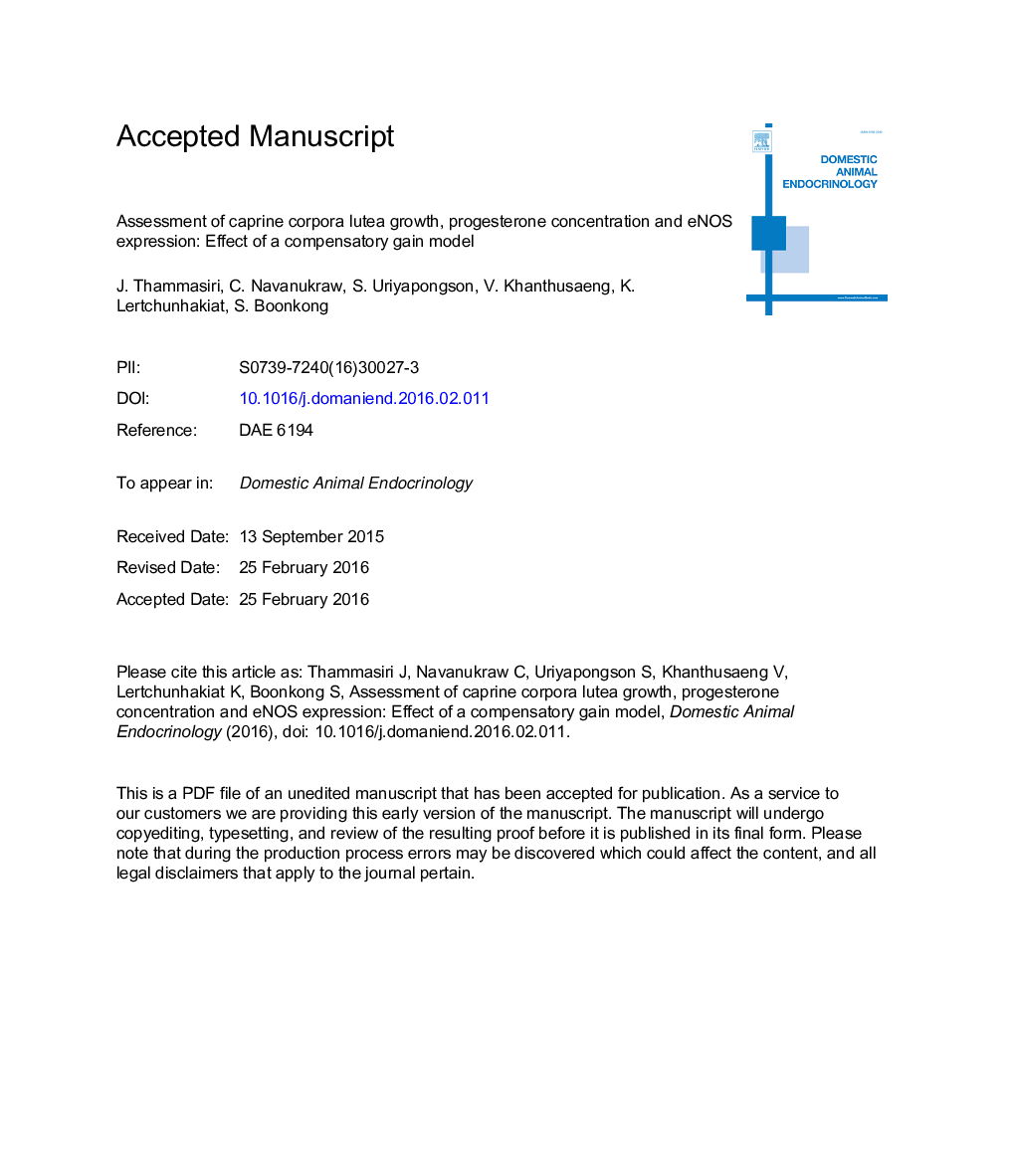| Article ID | Journal | Published Year | Pages | File Type |
|---|---|---|---|---|
| 8482035 | Domestic Animal Endocrinology | 2016 | 38 Pages |
Abstract
The experiment was conducted to evaluate corpus luteum (CL) growth, progesterone (P4) concentration, and endothelial nitric oxide synthase (eNOS) expression in nutrient stair-step fed goats. Female goats (n = 32) that exhibited at least 2, normal, consecutive estrous cycles were randomly assigned to either the control or stair-step fed group. In the control group, goats were fed ad libitum (100% of nutrient requirement for goats). The goats in the stair-step group were fed 70% of the control consumption for the first 42Â d and 130% for the later 42Â d during 4 consecutive estrous cycles (84Â d). Blood and luteal samples were collected on days 3, 8, 13, and 18 of the estrous cycle to determine concentration of glucose, insulin, P4, luteal growth, and eNOS expression. Luteal growth was determined using fresh CL weight, DNA content, DNA and protein concentrations, and cell proliferation (labeling index of Ki-67). During realimentation phase at 4Â h, glucose and insulin concentrations were greater (P < 0.05) in stair-step fed goat than those in control goats. Fresh CL weight, DNA content, protein concentrations, and labeling index of Ki67 on day 8 of the estrous cycle in the stair-step group were greater (P < 0.05) than that in the control group. Protein for eNOS was located in the capillaries of CL throughout of the estrous cycle in both groups. Greater serum P4 concentrations and eNOS protein (P < 0.05) were observed in the stair-step fed goats on day 3 (1.83Â ng/mL and 6.79%) compared with the control goats (0.98Â ng/mL and 6.02%) and on day 8 (5.15Â ng/mL and 7.88%) compared with the control goats (4.54Â ng/mL and 7.07%). These data demonstrate that luteal growth, progesterone concentration, and eNOS protein were partially affected by nutrient compensatory gain in goats.
Related Topics
Life Sciences
Agricultural and Biological Sciences
Animal Science and Zoology
Authors
J. Thammasiri, C. Navanukraw, S. Uriyapongson, V. Khanthusaeng, K. Lertchunhakiat, S. Boonkong,
